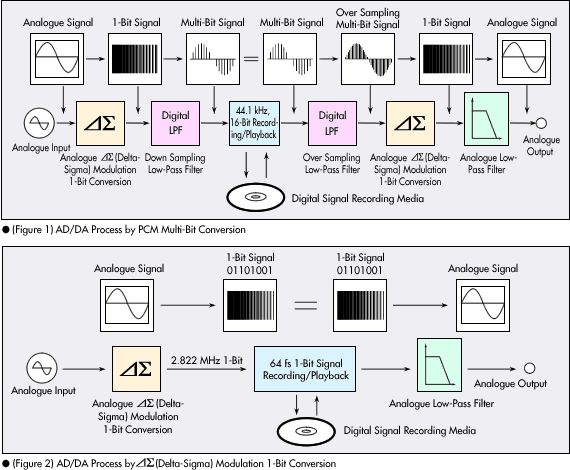Simplicity lies
at the heart of 1-bit technology. Until now, most digital recording formats
have relied on Pulse Code Modulation (PCM) to digitalise audio analogue
information. PCM multi-bit signals record each quantised sample as an absolute
value. To extract the analogue signal for playback the signal then passes
through several processes (Figure 1). 1-Bit in converting analogue signals
to digital, on the other hand, only records fluctuations between the quantised
samples at the ultra high-speed of 2.8224 MHz. Therefore the information
of 1-bit does not need any estimated decimation or complement. This simple
conversion process, seen in Figure 2, modulates analogue signals onto the
high frequency (64 fs = 2.8224 MHz) digital signals, removes the signals
in the high frequency range by a low-pass filter during D/A conversion and
then extracts the original analogue signals without devices and circuits
which tend to degrade sound. 1-Bit digital signal is capable of faithfully
recording, storing and transmitting the original analogue sound information
as it has fewer process to go through.  |
|
Home
> Products
News > 1-Bit Audio Components > 1-Bit
Technology
> Sound Technology that's Simply Superior |